Ebook The Kew Gardener's Guide to: Growing houseplant - Kay Maguire
[Ebook Việt Hoá] The Kew Gardener’s Guide to: Growing houseplant: How to grow houseplants (Cách trồng cây trong nhà)
- Nguồn: Ebook The Kew Gardener’s Guide to: Growing houseplant – Kay Maguire
- Biên tập: Dũng Cá Xinh
- Dịch: Happy Nguyen
English
House plants are available from specialist shops, nurseries, garden centres, supermarkets and online, but before you shop observe and assess your home so that you know what kind of conditions each room can offer.
Once you have found a plant to meet the appropriate conditions, check it over to make sure it is perky (not wilting) and in the best condition. Go for plants that have an even, bushy shape and healthy foliage with no yellowing, browning or disease on leaves and stems. Check the compost for pests, and lift the plant from its pot to see if the roots are congested – if they are, choose another or repot it when you get home. Finally, ensure the plant is wrapped and protected against the weather or damage on the way home.
Once home, unwrap new plants and repot them if they needed – especially if they are in pots without drainage holes. If the soil is dry, give a good water and leave to drain.
Finding the right spot
Every house plant needs light, water and warmth. Your job is to provide similar conditions – as close as possible – to its native habitat. If you give each house plant the appropriate place it will thrive – its new home must be the right place for it and not you!
Many plants, particularly tropical ones, need a settling-in period and may struggle at first, but this is to be expected. Resist the urge to keep moving plants to potentially better spots; give them time to find their ‘feet’.
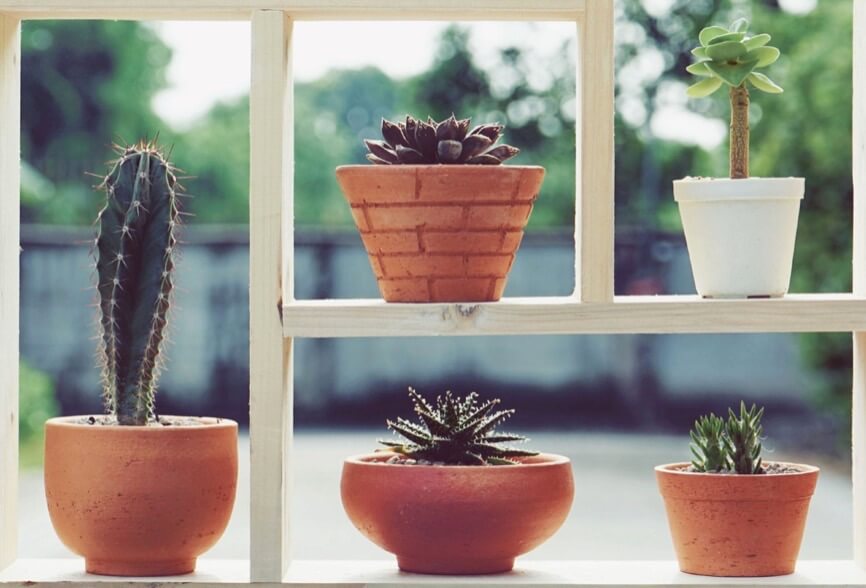
Light
This is a crucial source of energy for all plants. Although the amount of light an individual plant needs varies, all plants require some during the day.
The majority of plants we grow in our homes need bright, indirect light rather than direct sunlight, but there are plenty that prefer a shadier spot.
The amount of light a room receives depends on the size of the windows, whether the light source is direct or indirect, and the aspect – south-facing windows are the brightest, then east-, then west-, with north-facing ones receiving little sun at all.
The area directly in front of a south-facing window usually gets the strongest and most direct light. In summer, particularly, this will be too much for almost all plants except the toughest cacti and succulents.
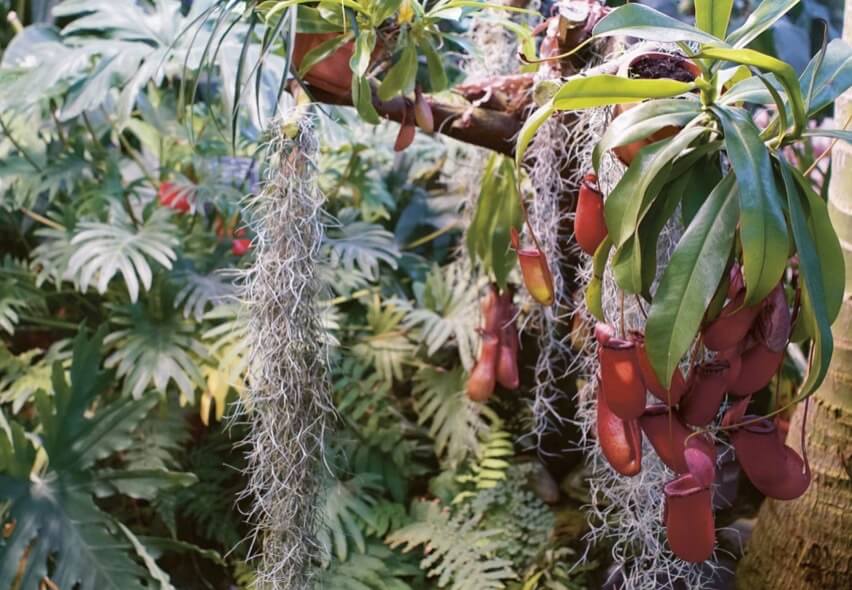
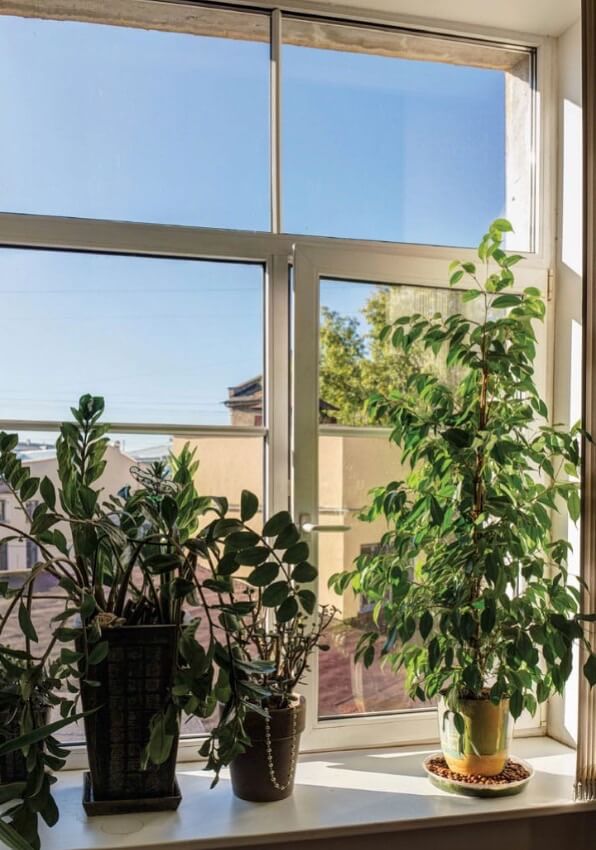
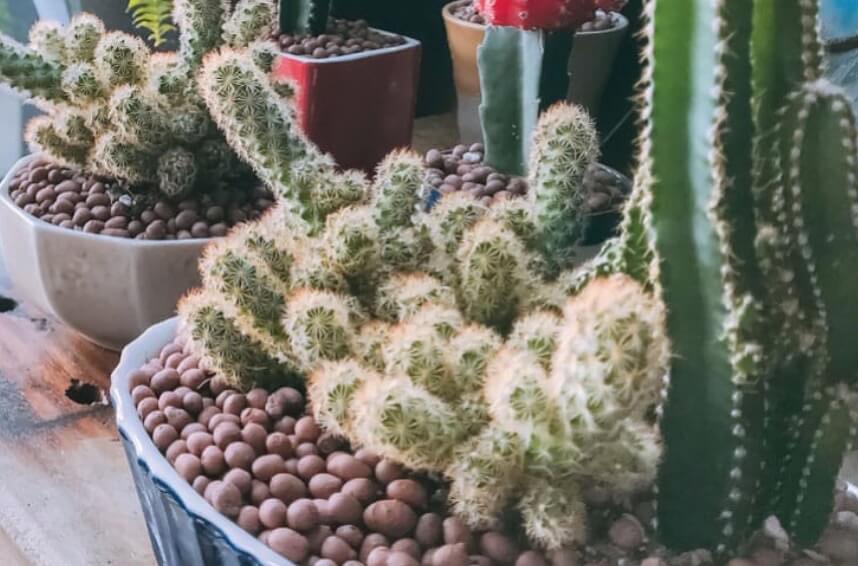
Bright, indirect light is found in front of west- and east-facing windows and a couple of metres/yards back from a south-facing one.
Semi-shade occurs in front of a north-facing window or to the side of one in a brighter room. The darkest, shadiest spots are in the back and sides of a room, particularly in rooms that receive no direct light or light for just a short time, although bright walls and mirrors help to reflect light in a room.
Light levels are reduced the closer you get to the ceiling, so remember this when choosing plants for hanging baskets, top shelves or on cupboards (see also Hanging gardens).
Remember that light is stronger in summer than in winter, so move plants that prefer brighter conditions nearer a window in the gloomier months.
If you can, turn plants every few days, so that they get even amounts of light and grow straight and balanced. Also, keep leaves clean – too much dust can prevent leaves absorbing light.
Temperature
Almost all house plants like temperatures that are warm during the day and cooler at night. Some such as tropical plants want a hotter spot, while others such as palms and carnivorous plants prefer life a little cooler. However, none likes dramatic swings of hot or cold, so avoid any draughts near doors and windowsills (where temperatures will drop considerably at night behind curtains) and keep plants away from ovens, radiators, fires and heaters. Note that some plants may need a cooler winter temperature, to promote flowering.
Humidity
Many plants, particularly those from the tropics, require a warm, moist atmosphere, with vapour levels in the air that are much higher than we can achieve normally in our centrally heated homes. Without the appropriate humidity level, plant leaves shrivel, turn brown and drop off, and growth can be stunted. Steamy bathrooms and kitchens are the obvious choice for plants such as these, but if you want to grow them elsewhere see here for tips on how to raise humidity.
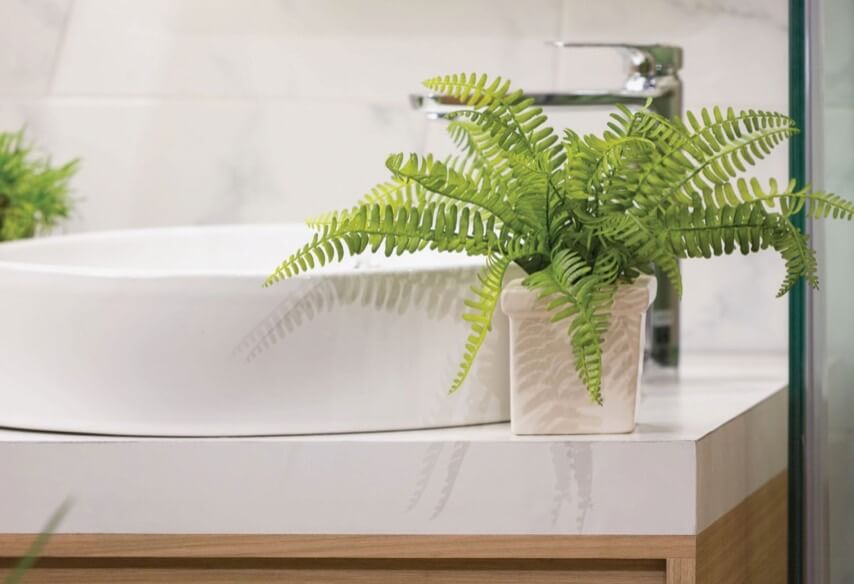
Tiếng Việt
Bạn luôn có thể tìm cây trồng trong nhà ở các cửa hàng chuyên dụng, vườn ươm, trung tâm vườn, siêu thị và cửa hàng cây trực tuyến. Nhưng trước khi bạn mua sắm, hãy quan sát và đánh giá ngôi nhà của mình để chọn ra loại cây phù hợp cho mỗi căn phòng.
Khi bạn đã tìm thấy loại cây đáp ứng các điều kiện thích hợp trong phòng, hãy kiểm tra thật kỹ để đảm bảo cây tươi tốt (không bị héo) và ở tình trạng tốt nhất. Chọn những cây mọc đều, rậm rạp và có tán lá khỏe mạnh, không bị vàng, nâu hoặc bệnh trên lá và thân. Bạn cũng cần kiểm tra phân trộn để loại bỏ sâu bệnh và thường xuyên nhấc cây ra khỏi chậu để xem cây có bị nghẹt rễ không. Nếu có, hãy chọn loại phân khác hoặc thay chậu. Cuối cùng, cần đảm bảo cây được che chắn và bảo vệ khỏi thời tiết hoặc hư hại từ môi trường xung quanh.
Sau khi chọn được loại cây bạn muốn mua, hãy mở bầu cây mới và thay chậu cho chúng nếu cần – đặc biệt nếu chúng đang được trồng trong chậu không có lỗ thoát nước. Nếu đất khô, hãy tưới đẫm nước rồi để ráo nước.
Chọn nơi trồng cây thích hợp
Mọi cây trồng trong nhà đều cần ánh sáng, nước và hơi ấm. Nhiệm vụ của bạn là cung cấp các điều kiện tương tự – càng giống càng tốt – với môi trường sống tự nhiên của nó. Nếu bạn cho mỗi cây một nơi trồng thích hợp, nó sẽ phát triển khỏe mạnh.
Nhiều loài cây, đặc biệt là những loài nhiệt đới, cần thời gian để ổn định và có thể chúng sẽ gặp khó khăn lúc đầu, nhưng điều này đáng được mong chờ. Đừng liên tục chuyển cây trồng đến những vị trí tốt nhất. Cho chúng thời gian để tìm “đôi chân” của mình. Chúng sẽ tự vươn mình tới nơi có điều kiện mà chúng cần.

Ánh sáng
Đây là một nguồn năng lượng thiết yếu cho tất cả các cây trồng. Mặc dù lượng ánh sáng mà mỗi cây cần không ở một mức cố định, nhưng tất cả các cây đều cần một lượng ánh sáng tối thiểu nhất định trong ngày.
Phần lớn các loại cây chúng ta trồng trong nhà cần ánh sáng gián tiếp hơn là ánh sáng mặt trời trực tiếp, nhưng cũng có rất nhiều loại cây chỉ ưa thích nơi có bóng râm.
Lượng ánh sáng mà một căn phòng nhận được phụ thuộc vào kích thước của các cửa sổ trong phòng, cho dù nguồn sáng là trực tiếp hay gián tiếp. Cửa sổ hướng Nam mang lại nhiều sáng nhất, sau đó là hướng Đông, rồi đến hướng Tây, cuối cùng là cửa sổ quay mặt về hướng Bắc.
Như đã đề cập ở bên trên, khu vực ngay trước cửa sổ hướng Nam thường nhận được nhiều ánh sáng trực tiếp và mạnh nhất. Đặc biệt, vào mùa hè, nơi này đón lượng ánh sáng quá lớn cho hầu hết các loại cây ngoại trừ những loài Xương Rồng và cây mọng nước.



Hãy nhớ rằng ánh sáng mạnh hơn vào mùa hè so với mùa đông, vì vậy hãy di chuyển những cây ưa sáng đến gần cửa sổ hơn vào những ngày tháng có khí hậu âm u. Nếu có thể, hãy đổi vị trí cây vài ngày một lần để chúng nhận được lượng ánh sáng đồng đều và phát triển cân đối. Ngoài ra, hãy luôn giữ lá sạch sẽ bạn nhé – quá nhiều bụi sẽ ngăn cản quá trình lá hấp thụ ánh sáng.
Nhiệt độ
Hầu hết tất cả các cây trồng trong nhà đều ưa nhiệt độ ấm vào ban ngày và khi trời mát hơn vào ban đêm. Một số cây như cây nhiệt cần nơi có khí hậu nóng. Trong khi đó, những cây khác như cọ và cây ăn thịt lại ưa thích môi trường sống mát mẻ hơn một chút. Tuy nhiên, không loại cây nào chịu được sự thay đổi đột ngột của thời tiết nóng hoặc lạnh, vì vậy hãy cản mọi luồng gió lùa vào từ cửa chính và cửa sổ (nơi nhiệt độ sẽ giảm đáng kể vào ban đêm sau rèm cửa) và nhớ để cây tránh xa lò nướng, bộ tản nhiệt, lửa và lò sưởi bạn nhé! Lưu ý rằng một số cây có thể cần nhiệt độ lạnh vào mùa đông để thúc đẩy quá trình ra hoa.
Độ ẩm
Nhiều loài thực vật, đặc biệt là những loài từ vùng nhiệt đới, yêu cầu bầu không khí ẩm và ấm, với mức hơi nước trong không khí cao hơn nhiều so với mức trung bình trong những ngôi nhà có hệ thống sưởi. Nếu không có độ ẩm thích hợp, lá cây sẽ bị héo, chuyển sang màu nâu và rụng. Sự phát triển của cây có thể bị gián đoạn và cây của bạn sẽ chết dần. Phòng tắm và nhà bếp ẩm ướt là những lựa chọn tốt nhất cho những loại cây như thế này, nhưng nếu bạn muốn trồng chúng ở những nơi khác, hãy tiếp tục theo dõi ở các bài viết sắp tới để biết mẹo về cách tăng độ ẩm.




